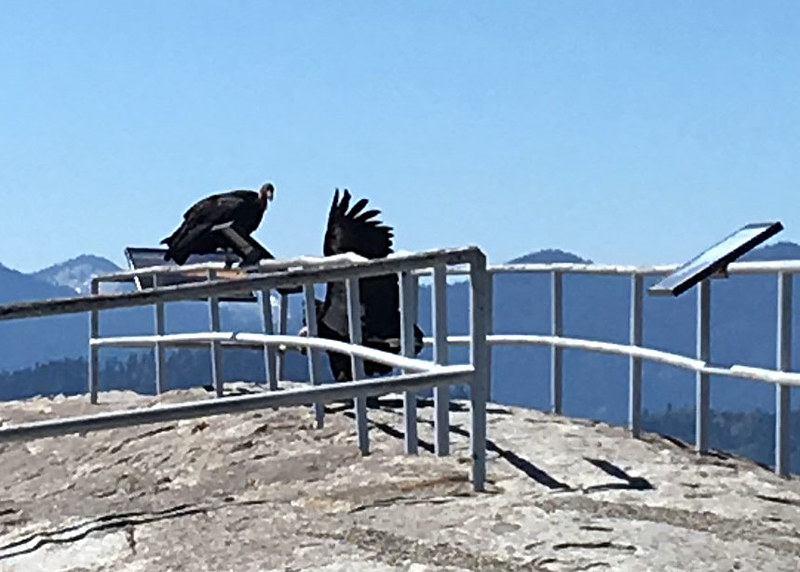
The effort to save the endangered California condor has been a decades-long endeavor, but progress is being made. This past May, after nearly 30 years of absence, wild condors were spotted in Sequoia National Park.
“Condors were consistently seen throughout the parks until the late 1970s. Observations became increasingly rare throughout the latter portion of the century as the population declined,” Tyler Coleman, a wildlife biologist with Sequoia and Kings Canyon National Parks, said. “Four condors were spotted flying near the Giant Forest and at least two near Moro rock.”
The California condor long inhabited the trees and cliffs of the Sierra Nevada, but by 1982 the wild population had shrunk to just 22 birds, all of which were subsequently trapped and brought into captivity to prevent extinction of the species.
Lead poisoning was, and still is, a major factor in the population levels of the condor. “Lead-core bullets shed weight in small fragments as they hit game, and have the potential to poison wildlife, including condors, who scavenge the remains,” Chad Thomas, non-lead outreach coordinator for the Institute for Wildlife Studies, said.
In addition to the lead hazard, the relatively slow maturation and reproduction rates of the condor make population growth challenging. Generally the birds don’t reproduce until at least six years old, and females lay only one egg every two years.
Fortunately, human efforts to save the endangered birds from the brink of extinction have been successful. A captive breeding program at the Los Angeles Zoo and San Diego Wild Animal Park helped save the condor from extinction. By 1992, the U.S. Fish and Wildlife Service and partner organizations released condors back into the wild in the mountains of the Los Padres National Forest.
That initial flock has grown to approximately 100 through the continued release of captive bred birds and wild reproduction. The total wild population of condors is now approximately 340, including those occupying areas along California’s Central Coast, at Pinnacles National Park, and in Arizona, Utah, and Baja California.
“As biologists, we are excited to see condors continue to expand back into their historic range. And also for the opportunity to engage with the local communities to share what they can do to contribute to the recovery of California condors, and also inform them about threats to these birds,” Laura McMahon, a wildlife biologist with the USFWS California condor Recovery Program, said.

